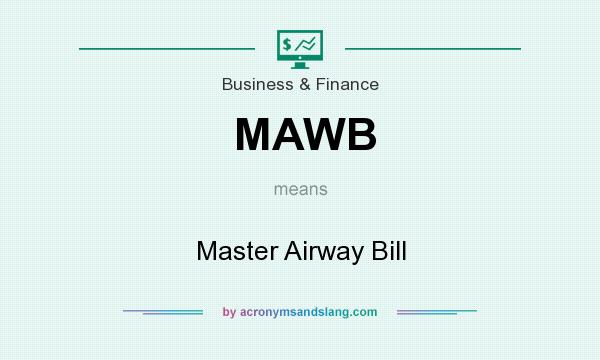Free Cash Flow to Firm FCFF Formula, Example, Analysis, Calculator
By: Flaka Ismaili March 11, 2019
Contents
The figure shows how assets are performing in a vacuum because it ignores the payments made for debt incurred to obtain those assets. Investors have to make sure to consider debt obligations since highly leveraged companies are at greater risk for bankruptcy. Unlevered free cash flow is the gross free cash flow generated by a company. Leverage is another name for debt, and if cash flows are levered, that means they are net of interest payments. Unlevered free cash flow is the free cash flow available to pay all stakeholders in a firm, including debt holders as well as equity holders. The formula used to calculate the free cash flow to firm takes many forms.

Since it may be a large number, maintenance capex’s uncertainty is the basis for some people’s dismissal of ‘free cash flow’. Net free cash Flow definition should also allow for cash available to pay off the company’s short term debt. It should also take into account any dividends that the company means to pay. Up-to-date, accurate financial statements are foundational for effective planning and management. Cash flow margins are ratios that divide a cash flow metric by overall sales revenue. UCFC margin would therefore represent the amount of cash available to a firm before financing charges as a percentage of sales.
How to Calculate FCFE from EBITDA
Like EBITDA, depreciation and amortization are added back to cash from operations. However, all other non-cash items like stock-based compensation, unrealized gains/losses, or write-downs are also added back. Free cash flow represents the cash a company can generate after accounting for capital expenditures needed to maintain or maximize its asset base. In corporate finance, the debt-service coverage ratio is a measurement of the cash flow available to pay current debt obligations. The FCFF calculation is an indicator of a company’s operations and its performance.
Learn financial statement modeling, DCF, M&A, LBO, Comps and Excel shortcuts. Normalizing the cash flows becomes particularly relevant when performing trading comps using FCFF-based multiples, in which the target company and its comparables (i.e., peer group) are benchmarked against each other. Next, non-cash items such as depreciation & amortization (D&A) are added back since they are not real cash outflows.

Discounting this FCFF provides us with the Enterprise value of the firm. FCFF formula generally does consider long term financial investments in the formula. We adjust for such figures after we have arrived at https://1investing.in/ the Enterprise Value. Free cash flow to the firm is important because it reflects the amount of cash flow which is available to all the investors including bondholders as well as shareholders of the firm.
Cash flowis the net amount ofcash and cash equivalentsbeing transferred into and out of a company. Positive cash flow indicates that a company’sliquid assets are increasing, enabling it to settle debts, reinvest in its business, return money to shareholders, and pay expenses. Net CashNet Cash represent the company’s liquidity position and is calculated by deducting the current liabilities from the cash balance reported on the company’s financial statements at the end of a particular period. Analysts and investors examine it to have a better understanding of the company’s financial and liquidity position.
Cash Flow Reconciliation Template
An alternative formula to calculate FCFF starts with net income, which is a post-tax and interest metric. Based on the assumptions listed, the EBITDA is $25m, from which we deduct $5m in D&A to get $20m as the EBIT. And to calculate NOPAT, we apply a 40% tax rate to the $20m of EBIT, which comes out to $12m. However, recall each item must be recurring and part of the core operations – thereby, not all non-cash items are added back (e.g., inventory write-downs).
FCFF represents the available cash for the investors, both equity and debt holders after the company pays off all its expenses, including taxes, interest, net capital expenditures, and working capital. In other words, free cash flow to the company is the cash left over after a company has paid its operating expenses and capital expenditures. Free cash flow to the firm represents the amount of cash flow from operations available for distribution after accounting for depreciation expenses, taxes, working capital, and investments. FCFF is a measurement of a company’s profitability after all expenses and reinvestments. It is one of the many benchmarks used to compare and analyze a firm’s financial health.
All of these activities minimize current liabilities and changes to working capital, but the impacts are only temporary. This is one of the many indicators used to see if the company is still doing well. EPSEarnings Per Share is a key financial metric that investors use to assess a company’s performance and profitability before investing. It is calculated by dividing total earnings or total net income by the total number of outstanding shares. The higher the earnings per share , the more profitable the company is.
EBITDA vs CFO vs FCFF vs FCFE
If the expenditure has increased from the previous year, they are subtracted from EBITDA, precisely after-tax earnings. The Common StockholdersA stockholder is a person, company, or institution who owns one or more shares of a company. They are the company’s owners, but their liability is limited to the value of their shares.
One common two-stage model assumes a constant growth rate in each stage, and a second common model assumes declining growth in Stage 1 followed by a long-run sustainable growth rate in Stage 2. Jensen also noted a negative correlation between exploration announcements and the market valuation of these firms—the opposite effect to research announcements in other industries. Net of all the above give free cash available to be reinvested in operations without having to take more debt.
- This is an important consideration, especially within rapidly changing market landscapes.
- Finding CFO, FCFF, and FCFE may require careful interpretation of corporate financial statements.
- Fundamentally, free cash flow is a measurement that helps to determine the amount of cash generated by a firm after it has paid its capital expenses.
It is that portion of cash flow that can be extracted from a company and distributed to creditors and securities holders without causing issues in its operations. As such, it is an indicator of a company’s financial flexibility and is of interest to holders of the company’s equity, debt, preferred stock and convertible securities, as well as potential lenders and investors. The formula for unlevered free cash flow uses earnings before interest, taxes, depreciation and amortization , and capital expenditures , which represents the investments in buildings, machines, and equipment. It also uses working capital, which includes inventory, accounts receivable, and accounts payable. In other words, free cash flow to the firm is the cash left over after a company has paid its operating expenses and capital expenditures. Discounted cash flow valuation views the intrinsic value of a security as the present value of its expected future cash flows.
This analysis assesses the present fair value of assets, projects, or companies by taking into account many factors such as inflation, risk, and cost of capital, as well as analyzing the company’s future performance. Free cash flow is arguably the most important financial indicator of a company’s stock value. The value/price of a stock is considered to be the summation of the company’s expected future cash flows. Understanding a company’s FCFF allows investors to test whether a stock is fairly valued. FCFF also represents a company’s ability to pay dividends, conduct share repurchases, or pay back debt holders.
This makes it easier to conduct discounted cash flow analysis across different investments in order to make like comparisons. Fundamentally, free cash flow is a measurement that helps to determine the amount of cash generated by a firm after it has paid its capital expenses. Typically, such a measure helps to compute the profitability and financial health of a company. For a more focused analysis, one can use a specific type of FCF like – free cash flow to firm. Free cash flow to the firm represents the cash flow from operations available for distribution after accounting for depreciation expenses, taxes, working capital, and investments. An analyst who calculates the free cash flows to equity in a financial model must be able to quickly navigate through the financial statements.
What is Balance Forward Accounting? How Can it Impact ESOP Participants?
Without a regulatory standard for determining FCFF, investors often disagree on exactly which items should and should not be treated as capital expenditures. Cash flow is reported on the cash flow statement, which contains three sections detailing activities. Those three sections are cash flow from operating activities, investing activities, and financing activities. Moreover, free cash flows have an ingrained characteristic resembling the cash position because they capture non-cash charges and capital expenditures.
EBITDA vs. Cash Flow vs. Free Cash Flow vs. Free Cash Flow to Equity vs. Free Cash Flow to Firm
Cash Flow StatementA Statement of Cash Flow is an accounting document that tracks the incoming and outgoing cash and cash equivalents from a business. Depreciation – This should be taken out since this will account for future investment for replacing the current PPE. Current portion of LTD – This will be minimum debt that the company needs to pay in order to not default. Dividends – This will be base dividend that the company intends to distribute to its share holders.
Since Box Free Cash Flow to Firm is negative for the next five years, it may not be wise for us to calculate the value of Box using the Discounted Cash Flow approach. Terminal ValueTerminal Value is the value of a project at a stage beyond which it’s present value cannot be fcff formula from ebitda calculated. Also, as discussed earlier, maintenance capital expenditure cannot be avoided; Peter must spend another $600,000 to keep the assets running. Peter will need to raise another set of capital – this time, let us assume he raises another $250,000 from the bank.
The free cash flow to the firm also indicates that the company is able to pay dividends to its shareholders. Any investor looking to invest in a company should check on this number before making any payments. Within this same time OWL, Inc. paid $300 million in interest subject to a 30% tax rate.
Here Capex Definition should not include additional investment on new equipment. FCFF differs from EBITDA in that FCFF adjusts for changes in working capital, subtracts after-tax interest expense while EBITDA does not. Now that we have gone from EBITDA to net income, the same steps apply, where we deduct the change in NWC and Capex.










